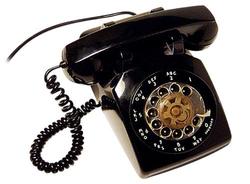I swapped emails today with Dave Kulka in Burbank. We first met when we were in our teens–a story in and of itself since I lived in Flushing, NY while Dave was a resident of Greenbrae in Marin County just north of San Francisco. Dave’s company masterfully repairs and restores older audio equipment used in recording studios.
 For years Dave was a mastering engineer. That’s the person who supervises the process of taking a song from recording to the lacquer masters that produce phonograph records. Knowing Dave, his records on your turntable sounded just like the session sounded in the studio. He is detail oriented.
For years Dave was a mastering engineer. That’s the person who supervises the process of taking a song from recording to the lacquer masters that produce phonograph records. Knowing Dave, his records on your turntable sounded just like the session sounded in the studio. He is detail oriented.
I sent him a shot of record grooves magnified 1,000 times. He’d seen it before, but to quote Dave, “It’s neat stuff.” It really is.
In return Dave sent me a link about “phone phreaks” and a book being written about them. These were people who:
 OK–that’s a little on the romantic side, but not incredibly far off base.
OK–that’s a little on the romantic side, but not incredibly far off base.
The author claims there are still phone phreaks today, but why? Forty years ago making long distance calls was expensive!
There were different rates in effect for different times of the day. People would wait to make calls after 7:00 PM or after 11:00 PM when the rates fell. A daytime call was outrageously pricey!
Nowadays long distance phone calls flow like water from a faucet. Most cell plans don’t even bother to differentiate long distance from local because there’s really no incremental cost in carrying either! Nearly all the costs are fixed whether you make calls or not.
This crime has been solved by pricing it out of existence. Isn’t that strange? That doesn’t happen too often.
Like with the (continued) evolution of the PC, networking etc., we have broken so many glass ceilings that it was bound to happen that long-distance calls are, as you stated, so cheap to carry. It also helps that today’s technology allows those calls to be carried via wires that can carry thousands (or more) times the number of calls in a single strand.
I wonder when the glass ceiling will come (if ever).
In my first real job, I worked for someone who had worked at Bell Labs for a while, who explained area codes to me. Based on rotary phones, and assigned in anticipation of direct dial service, the lowest codes (212 for example) were assigned to the areas with the most in and out bound traffic because “dialing” time was not billed and Bell therefore wanted to minimize it, while low traffic areas (709 – Newfoundland) were assigned numbers that took the most unbilled time on the network. With keypad dialing, that became irrelevant. This is also the reason why “1” was used to initiate long distance service.